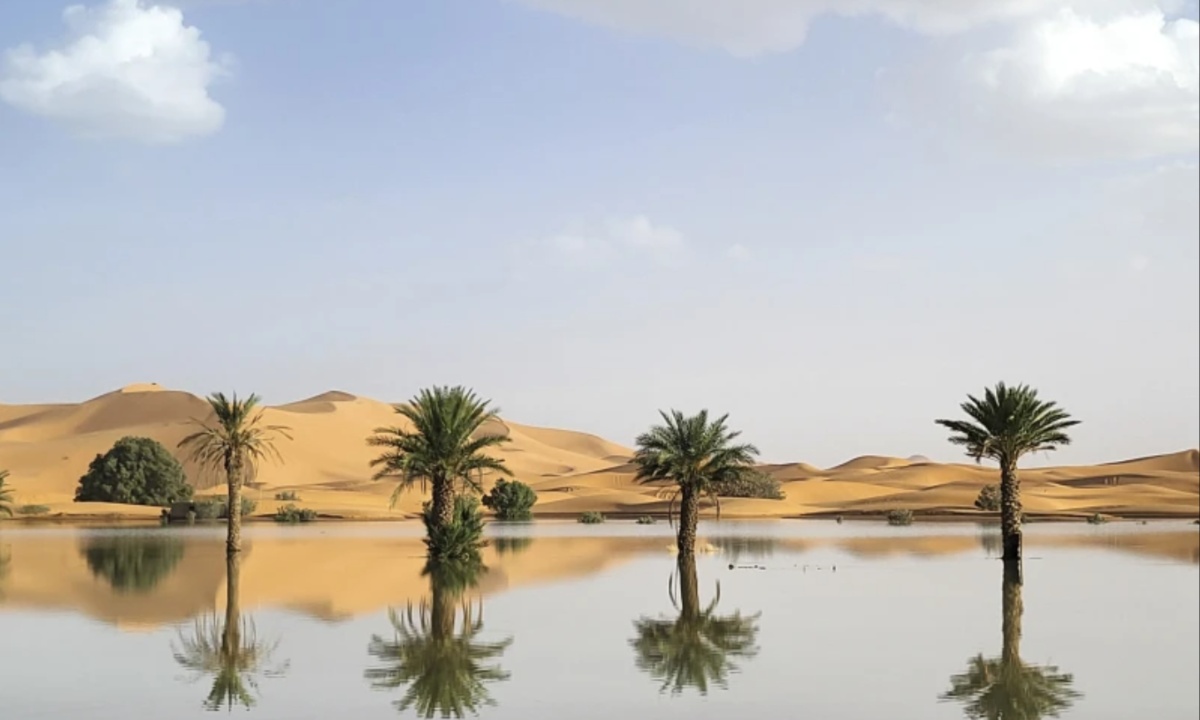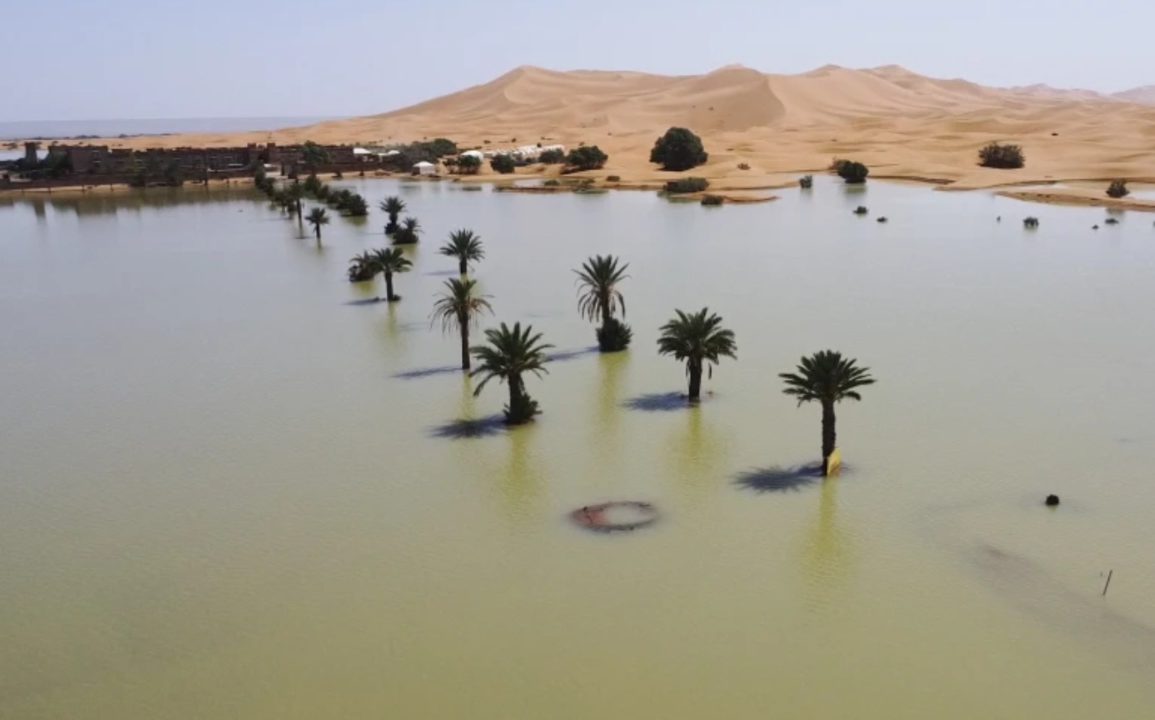A rare and heavy rainfall in the Sahara Desert, particularly in southeastern Morocco, created stunning blue lagoons of water amid the desert’s sand dunes and palm trees. This deluge nourished some of the driest regions of the world, providing more water than these areas had received in decades.
In places like Tata, where rainfall is typically scarce, two days of September rain exceeded yearly averages, with villages like Tagounite receiving over 100 millimeters (about 4 inches) in just one day. The storm created striking visual scenes as water surged through the desert, filling dried-up lakes and rivers that hadn’t seen water in decades.
This rainfall was especially significant in southeastern Morocco, one of the most arid places globally, where rain during the late summer is an uncommon event. The storms were so powerful that NASA satellites captured images of water rushing into Lake Iriqui, a dry lake bed that had been parched for 50 years.
The vast desert, typically known for its scarcity of moisture, was transformed as water pooled in the sand, creating a remarkable juxtaposition of desert flora and flowing water.

Local communities, often visited by tourists, were stunned by the sudden deluge. Residents marveled at the transformation, with vehicles making their way through the puddles as they took in the unexpected sight. Houssine Youabeb of Morocco’s General Directorate of Meteorology remarked that such a rainfall event had not been witnessed in the region for 30 to 50 years.
Meteorologists noted that this storm, classified as an extratropical storm, could have a lasting impact on the region’s climate. The increased moisture in the atmosphere may lead to more evaporation and potentially more frequent storms in the future.
The drought that has plagued Morocco for six consecutive years has caused considerable hardship, with farmers forced to leave fields fallow and cities rationing water. The rainfall from this storm offers a welcome relief, potentially refilling large underground aquifers that supply water to desert communities.
Additionally, Morocco’s dammed reservoirs were replenished at unprecedented rates throughout September. While the storm was a much-needed reprieve, it remains uncertain whether this rain will be enough to fully alleviate the long-term drought that the region has faced.
Despite the positive effects of the rainfall, the storms also caused destruction. The intense rain led to floods that claimed the lives of over 20 people in Morocco and Algeria, damaging farms and agricultural harvests.
The Moroccan government has been forced to allocate emergency relief funds to help communities affected by the floods, which added to the challenges already caused by last year’s devastating earthquake. While the rain provided a short-term boon to the arid desert, it also underscored the complex and often destructive nature of extreme weather events in the region.

